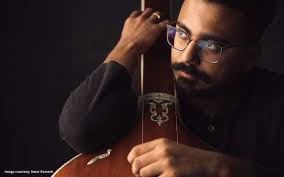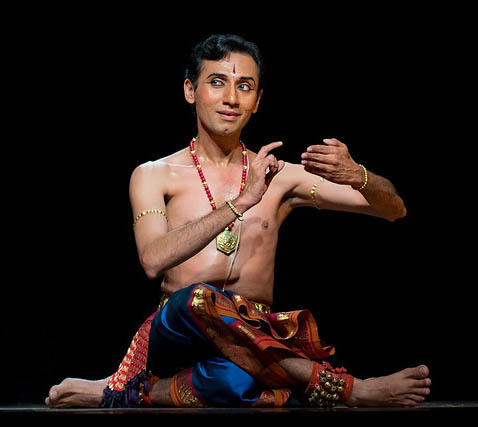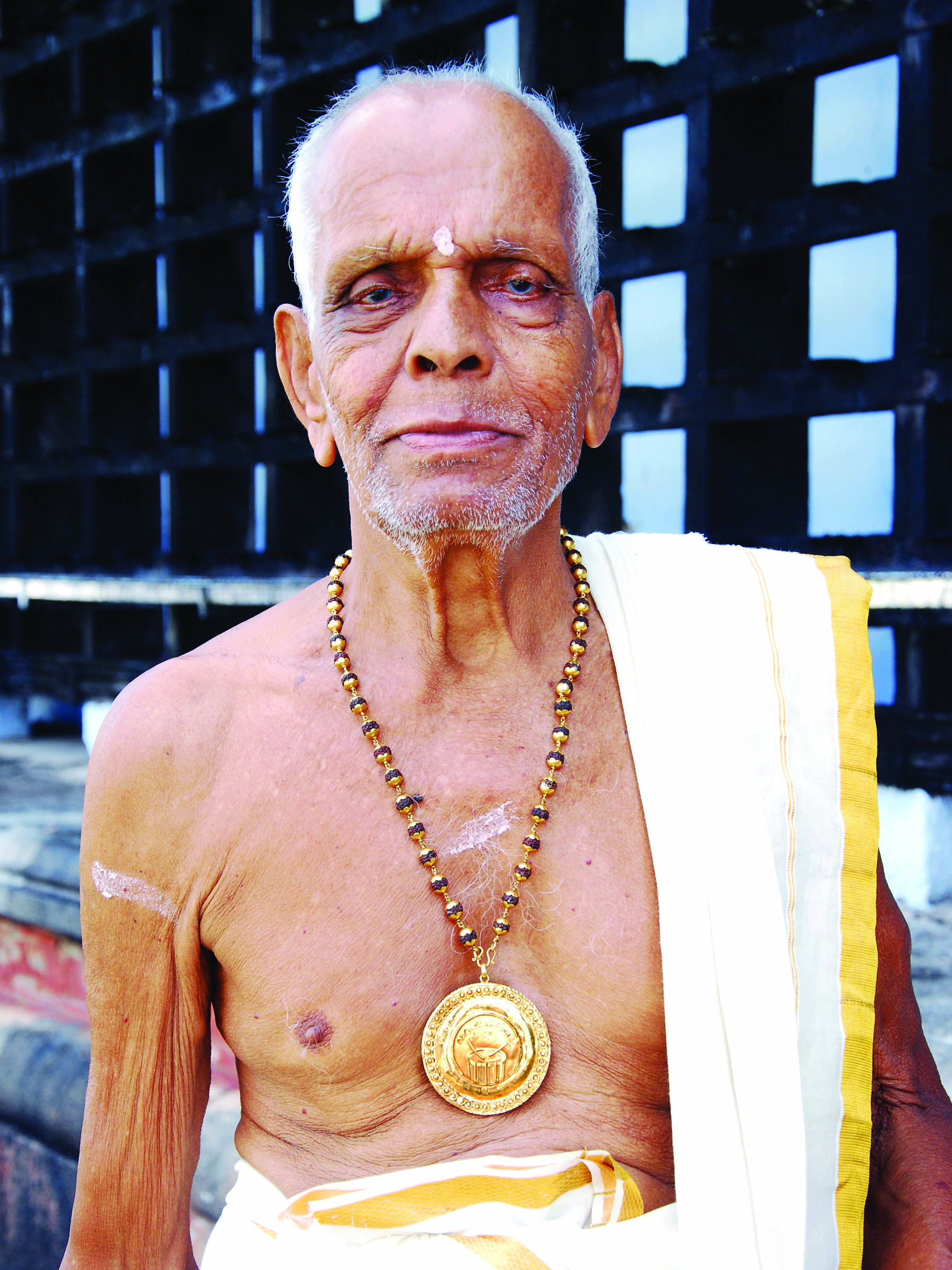The first time Bharat Sundar ever performed, it had nothing to do with Carnatic music. He was five years old and participating in a competition at his father’s office. “I sang the song Thooliyile aada vantha, he adds. Did he win the competition? “I did,” he smiles. “I still have a photo somewhere.” That small victory prefaced a successful career. Today, Bharat is one of the most popular singers in the younger set, with performances every season at all the top sabhas and bagging the best concert award in the senior category for two years in a row at the Music Academy, Madras. Born on 30 August 1988, Bharat casts back to his childhood. “My dad has hosted regular Ayyappan bhajanai sessions at home for as long as I can remember. My mom was a kathakalakshepam artist and an AIR-graded performer until family commitments took over. So music has always been there in my family in some form.” When he was six, his parents had an inkling that their elder son might have a musical spark and enrolled him in beginner vocal lessons with his aunt Gayathri Mahesh. Each day after school, little Bharat would head to his grandma’s house, where Gayathri taught an assortment of students. I ask if his aunt went easy on him because of being family. “On the contrary. I used to get whacks, and we used to fight with each other; that’s how the learning started. She used to pinch me a lot,” he says, chuckling. “She would complain to my mother about me: “He’s not interested, he’s too playful,” and my parents would of course, counsel me to focus, practice, and so on.” Lessons were a mix of formal and observational learning; Bharat watched Gayathri teach other students and absorbed most of the ‘baala paatham’; she then taught him varnams and kritis.
Hailing from a family of artists, it was but natural that Praveen Kumar showed an inclination towards the arts, and dance in particular, at a very young age. However, after coming under the tutelage of eminent guru Narmada in Bengaluru, Praveen realised the aesthetic depths of Bharatanatyam and decided to dedicate himself wholeheartedly and purposefully to this beautiful dance form. A strong adherent to the traditional values of Bharatanatyam, he is now training with the famous Bharatanatyam exponent and guru Prof. C.V. Chandrasekhar. Besides being an excellent dancer, Praveen is an accomplished nattuvangam artist and choreographer, and has skillfully created many dances, which have received critical acclaim. He runs the Chithkala School of Dance in Bengaluru. He has travelled extensively around the globe and in India, taking part in prestigious dance and music festivals. Praveen Kumar, who is an empanelled artist of the Indian Council of Cultural Relations (ICCR) and an ‘A’ grade artist on television, believes that dance is the ultimate medium of creative expression! He has been decorated with several prestigious awards, some of them being the Mohan Khokar Award (2010), Obul Reddy Endowment Senior Dancer Award from Natyarangam/Narada Gana Sabha (2016), Guru Kelucharan Mohapatra Yuva Pratibha Puraskar from Srjan, Bhubaneshwar (2016), Doordarshan Chandana Award from the Bengaluru Doordarshan Kendra (2017) and the Best Dancer of the Season award from the Madras Music Academy in 2018 and 2019. More recently he was awarded the Karnataka Kalashri—the highest civilian honour of the Karnataka state government’s Karnataka Sangeeta Nritya Academy and Department of Kannada and Culture.
The jalatarangam, today, is secure in the hands of vidwan Anayampatti S. Ganesan. Born on 22 May 1932, the maestro turns 90 this month. His only regret is about four of the vintage cups having broken over the years! The cups are made of original Chinese porcelain, a ceramic material largely comprising kaolin, says Ganesan. The mineral gains its characteristic strength as a result of emergence from kilns with temperatures no less than 1,400 degrees Celsius. The manufacturing technology is a millennium old, before which metal cups catered to jalatarangam music. The instrument finds reference in ancient times as ‘udaka-vadyam’ that enables playing music on water, which is listed under the 64 traditional skills called ‘chatushashti kalas’. [See Sruti 10 for a detailed article on the history of the jalatarangam.] In the mid-19th century, when Ganesan’s?father,?Anayampatti Subbayar (hailed as a legend of jalatarangam) inherited Krishna Iyer’s treasured property, Carnatic music did not have many jalatarangam maestros. “Their presence was primarily confined to areas in Chettinad and Madurai belts,” says Ganesan. The picture today too is not rosy, but there is no scope for disillusionment either.
If melam processions can raise aural storeys of towering architecture, the diminutive Thrippekulam Achutha Marar lorded over their grandest of varieties. Positioned in the middle of the front row with 15-odd men playing the chenda, the ethnic drum’s five-foot-tall emperor made no showy gestures to state his pre-eminence in traditional Kerala orchestras. The concerts would feature no less than 120 artists and often span four hours. Thrippekulam’s mastery made the presentation seem unassertive for the onlookers even as the rhythmic cycles revelled in classicism. As the melam continues to be the most popular ‘panchari’ or ‘pandi’, his leadership style retained the essential sobriety of temple festivities even amidst the changing aesthetics of a new age. Thrippekulam is the name of Achutha Marar’s family based in a heritage village south of Thrissur in the central part of Kerala. As a member of one community conventionally tasked with the percussive rituals at shrines, little Achu grew up assisting elders at the Bhagavati kshetram near their modest house at Urakam. The routine acts inside the sacred precincts made life busy for the boy—before and after his school hours. During mornings and at sunset hours, he would play not just the chenda but allied instruments such as the slender timila, ilatalam (cymbals) and the chengila (gong) that keeps time. Occasionally, he would render invocatory songs while simultaneously playing the handy edakka for rhythmic rolls. The plain Sopana sangeetam notes would add solemnity to the pooja inside the sanctorum, ahead of the camphor-lit deeparadhana.
CONTENTS Vol.
29 Issue 5 May 2022
6 Sruti box
8 News & notes
10 Birthday calendar
12 Bharat Sundar
24 Praveen Kumar
32 Opinion v Women in Kathakali
34 Spotlight v Anayampatti S. Ganesan turns 90
37 Centenary tribute v Thrippekulam
Achutha Marar
39 News & notes (continued)
41 Record rack
42 From the Editor
Front
Cover: Praveen Kumar
Bharat Sundar
No.
452





.jpg)
